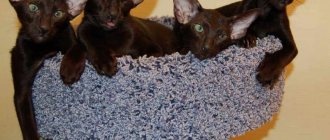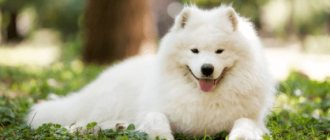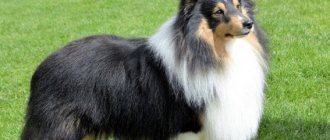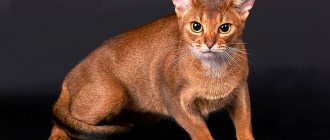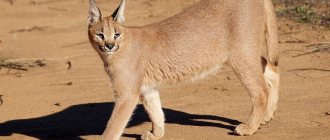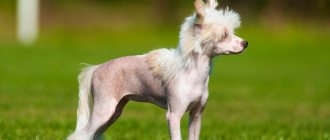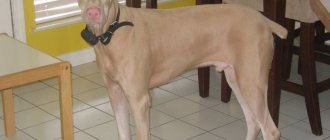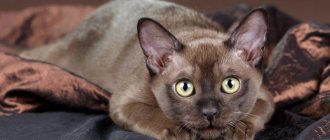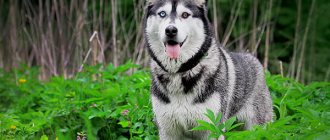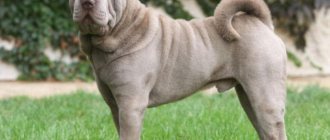Deer are very beautiful animals with a graceful elongated body, a long neck, slender limbs, a short tail and a pointed head with large eyes. Body weight varies from 8 kg (for the southern pudu) to 800 kg (for the elk). The calling card of almost all males of the family is the horns, which are processes of the frontal bones.
The cervid family (Cervidae) is divided into two main groups: Old World species (subfamilies Muntjac and True deer) and New World species (subfamilies Water deer and Roe deer). These cardinal references indicate the origin, rather than the modern distribution, of each group. There are 51 species of deer in total, and this article will introduce you to some of them.
Pudu spread
These animals are common in Ecuador, southern Colombia, Chile, Peru and western Argentina. Pudus used to be numerous in Western Argentina and the Andes of Chile, as well as on the islands of the Chilean coast.
But today these animals have disappeared from most areas as people actively persecuted them. Pudus live only in the marine areas of Chile and on the island of Chilos.
Pudu.
Lifestyle and behavior
Very little is known about the behavior of tufted deer in the wild. Apart from the period of mating and raising young, males and females live alone . These are very territorial animals. Both sexes regularly scrape the ground with their front hooves, further securing their rights to territory with extensive markings through secretions of the preorbital glands, urination and defecation.
Crested deer are active at dawn and dusk, with two feeding periods in the early morning and late afternoon, but detailed activity patterns have not been established by scientists due to the animals' secretive lifestyle. Crested deer are very timid . They choose places rich in cover and places where they can crouch and hide, being invisible due to their camouflage coloring. They are very easy to disturb; when they are frightened, they run away in "cat-like hops" with their tail in the air. Exposing the white underside of the tail is a unique way of notifying relatives of a threat.
Photo: Animalreader
Crested deer vocalizations include three types of sounds:
- "bark" heard during alarm and courtship;
- the high-pitched "whining" made by a subordinate deer under stress during a confrontation with a dominant individual;
- “click” with a closed mouth, used in regular interactions with conspecifics.
The last 2 vocalizations are often accompanied by "taunting" with the upper canines exposed.
Interactions between males revolve around dominant and submissive behavior, with the dominant male chasing and head-butting the subordinate male and the latter responding by whining and adopting submissive postures such as crouching, crawling, and lying down. The saber-toothed canines of mature males undoubtedly play a role in such interactions and in territorial defense. The hair on the tail, forehead and all over the body stands on end at this time.
Appearance of Pudu
Pudus are small in size. They reach a length of 80-93 centimeters, a height of about 35 centimeters, and their body weight does not exceed 7-11 kilograms.
The pudu has a squat build, with a short head and neck. In appearance, they do not resemble deer, but are more similar to maz. The back is arched. The ears are short, round in shape, covered with thick fur. Northern Pudus do not have tails.
The horns are short, they grow to only 7-10 centimeters, and are unbranched. They are practically invisible among the hairs of the frontal tuft. The coat is thick, the color of the coat is dark gray-brown or dark red-brown with fuzzy light spots, and the belly is reddish.
They live in South America in the country of Chile and the island of Chilos. Although previously their range included a wider area.
Varieties
The tufted deer is the only member of the genus Elaphodus. It was first scientifically described in 1872 . There are three or four subspecies (depending on the author's point of view), differing slightly in size and color:
- Elaphodus cephalophus cephalophus (western tufted deer) is the largest subspecies with brownish fur; often observed in southwest China and northeast Myanmar.
- Elaphodus cephalophus michianus (Michie's tufted deer) is a subspecies with a narrower snout; lives in a small area in southeast China.
- Elaphodus cephalophus ichangensis (Ichang tufted deer) - with a wider muzzle and grayish-brown hair; native to Central China. It is possible that this is a hybrid of the two previous subspecies.
- Elaphodus cephalophus forciensus is a controversial subspecies with an unclear distribution, which many scientists classify as a species of E. c. michianus.
Lifestyle of little deer
Pudus live in dense thickets, in forests, rising up to 4 thousand meters. Their diet consists of grass, seeds, leaves of shrubs and fruits. Pudus can live in pairs, family groups or alone.
During the day, pudus hide in impenetrable thickets of bushes and only at nightfall do they come out into the open to graze. Most often they feed on the seashore, since there is a lot of fuchsia algae there; these algae form the basis of the pudu's diet. In summer, these deer are very cautious, but in winter, when there is not enough food, they approach people's homes, where they often become victims of dogs.
Lifestyle Features
Pudus are distinguished by their caution and secrecy. The active period in animals begins in the morning and ends at night. Individuals live either alone or in pairs. Each deer has its own small territory in which it lives. In order for the pudu to rub its forehead against trees and other areas (it has special odorous glands on its head).
Pudu breeding
Pregnancy in females lasts 7 months. The female gives birth to one baby. Babies appear in early summer.
At birth, a baby Pudu is only 15 centimeters long.
On the back of babies there are 3 rows of white spots, they stretch from the shoulders to the tail. The height of newborn babies is only 15 cm, but they grow very quickly and after 3 months they catch up with their parents. Pudus reach sexual maturity at one year of age.
Origin
Euprox furcatus is the oldest member of the Muntiacini lineage, which includes tufted deer (Elaphodus) and muntjac (Muntiacus).
Photo: Wikipedia
The Late Miocene, approximately 7-9 million years ago , appears to have been the time of the emergence of a distinct group of deer, characterized by short antlers and prominent "tusks" (upper canine teeth); the latter were used in intraspecific fights for territory and females. The split between tufted deer and muntjac may have occurred around 3.4-4.8 million years ago.
The first fossil remains of the ancestral tufted deer were discovered in Pleistocene sediments in Yenchingkou, Sichuan Province of China. The large subspecies found, Elaphodus cephalophus megalodon, had larger teeth and expanded nasal cavities that were less compressed at the rear than extant subspecies. During the Quaternary period, this species underwent a significant decrease in size.
Number of miniature pudus
Both types of pudu are vulnerable and are listed in the Red Book. The numbers of these animals have suffered mainly due to the loss of their habitats, as well as overhunting.
There are northern and southern pudas. But outwardly they are almost no different from each other.
Southern Pudus are easier to keep in captivity than Northern Pudus, but a small population of Northern Pudus used to live in zoos. In 2010, about 100 southern pudus lived in American and European zoos. These animals are protected in various national parks. But, despite measures to preserve the pudú, this genus is in danger of extinction.
Pudus may be exterminated due to the destruction of their habitats, as people actively cut down tropical forests. People clear land for farming, logging, and raising livestock. In addition, highways and roads are being built, so pudus often die under the wheels of cars. Pudus are also caught to be kept as pets or for the illegal trade. In addition, people kill puda for its meat. Domestic dogs attack puda and infect them with parasites. All of these factors can be detrimental to vulnerable little deer.
If you find an error, please select a piece of text and press Ctrl+Enter.
Nutrition
Pudu are herbivorous animals that feed on branches and bark, lush grass and fresh leaves, fallen fruits and seeds. On such a menu, they can do without drinking water for a long time, being content with the moisture entering the body with food.
Unfortunately, their small stature often becomes an obstacle that prevents them from reaching tree branches. Therefore, pudus resort to tricks: they get food by standing on their hind legs, bend young shoots to the ground with their own weight, and sometimes use them as a “stand” to reach higher tiers of the forest.
Marals
What kind of animals are these? The opinions of zoologists are divided: some believe that this is a special type of deer, which in eastern Siberia is called wapiti, in North America - wapiti. Others claim that deer are a type of red deer. From which it differs in larger horns, coat color, greater height and shorter tail length. The species has groups: Siberian, or maral, Central Asian and Western. This is a very beautiful animal with its head held high.
A proud posture indicates a rebellious disposition and enormous strength. The horns with many branches grow up to 108 cm. The weight of males is about 300 kg, females are somewhat smaller. In terms of size, it is the second largest animal after the moose. They begin to reproduce quite late. Males prefer the formation of a harem, in which there is a maximum of five females, starting at the age of five, and females are able to bear offspring by the age of three.
Altai maral is a type of red deer, it is most famous in our country. It is massively bred to obtain raw materials, which are deer horns. The medicine “Pantocrine” is made from them.
Natural enemies
In their natural habitat, deer have many enemies. Especially in medium and small subspecies. They can be hunted by lynxes, wolves, bears, wolverines, tigers and other large predators. The most “toothy” game is elk. Powerful giants can only be defeated by a bear or a pack of wolves.
But the main enemy of reindeer at all times has been and remains man. Hunting for trophy antlers and meat threatens the existence of all species. Therefore, in many countries of the world, deer are under state protection.
Price
Buying a live deer in Russia will cost approximately the following amount of money:
- Adult noble - from 35,000 rubles per head .
- Spotted - from 45,000 to 75,000 rubles .
- Muntjak - from 190,000 rubles per head .
- Fawn - from 7,000 per head .
Delivery of the animal is paid additionally.
